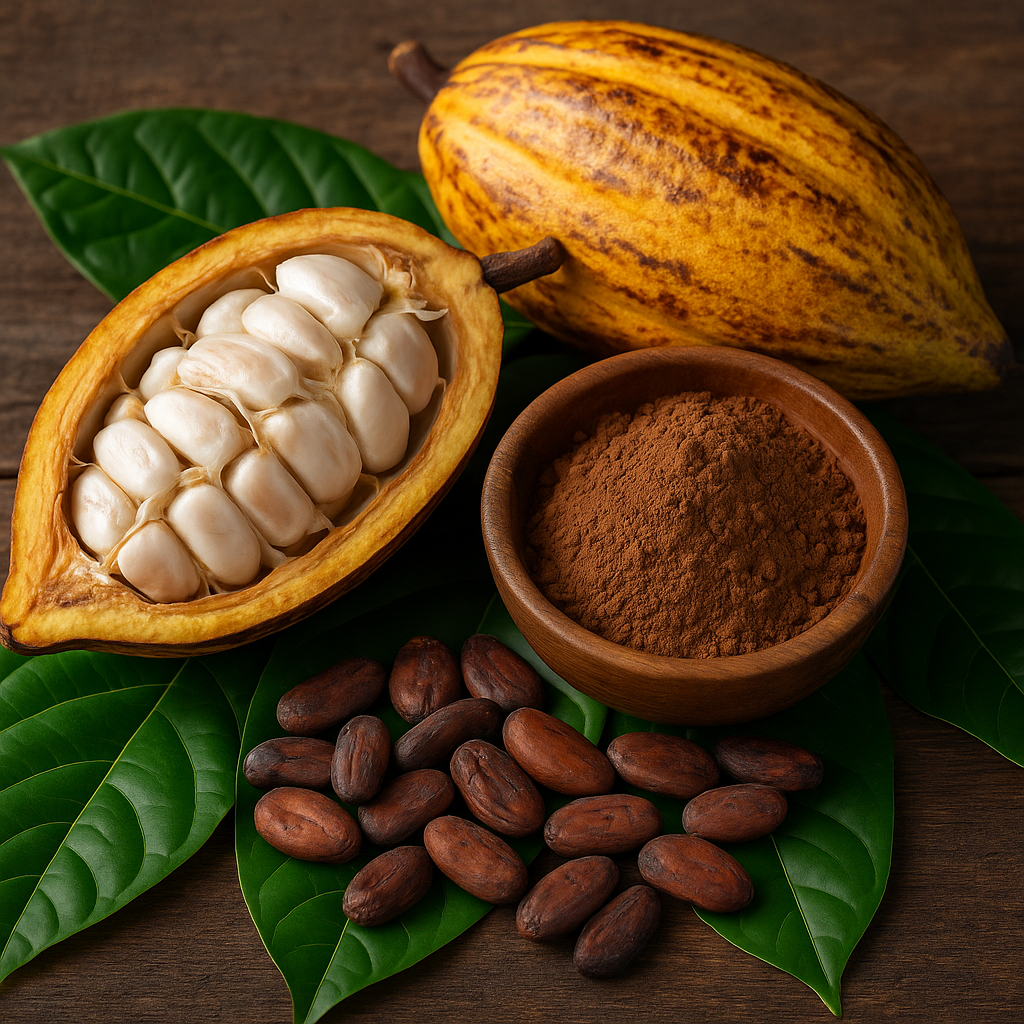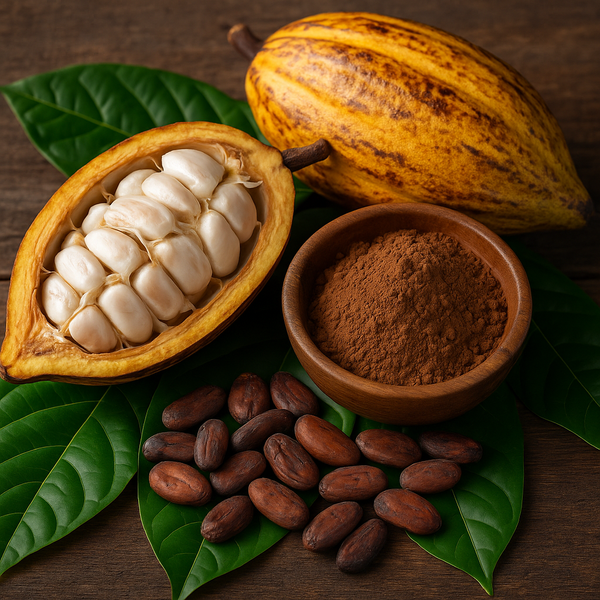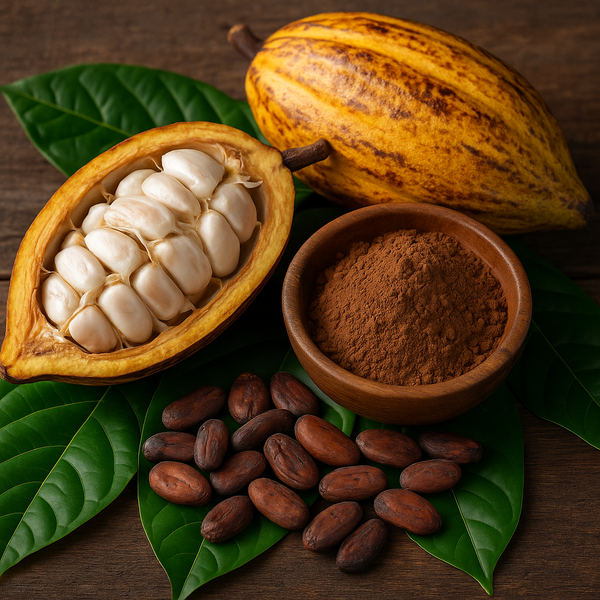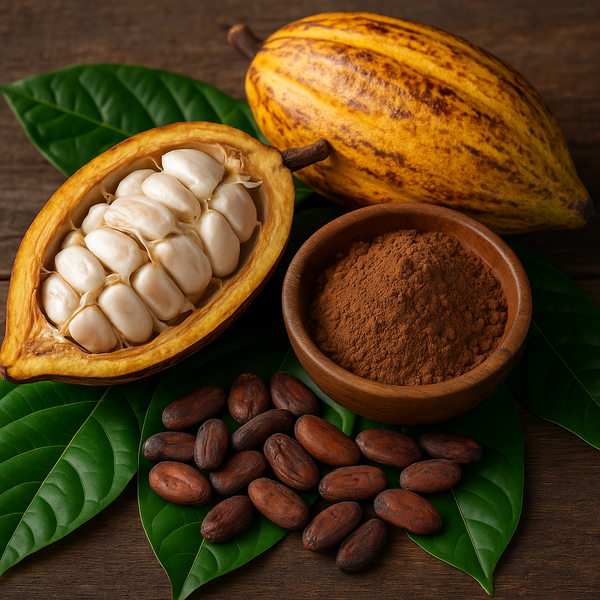18.10.2025 - Daily Cocoa Market Report

Market Overview
Cocoa futures were little changed on Monday, stabilising after last week’s volatile grind-data-driven sessions. London cocoa edged down 0.1% to £4,157 a tonne, while New York gained slightly to $5,940 as traders balanced bearish arrivals data from Ivory Coast with improving weather reports that could aid the ongoing main crop.
The market held above recent 1½-year lows as participants assessed mixed fundamentals: on one hand, a 31.6% slump in Ivorian port arrivals suggests ongoing supply tightness; on the other, forecasts for steady rainfall and sunshine through November point to potential recovery in later deliveries.
Inventory / Stocks
US cocoa stocks: 1,870,302
Up by 298 from Friday’s 1,870,004 (+0.02%).
Stocks were essentially flat, indicating limited new receipts as mid-crop bean movement remains slow.
UK cocoa stocks: 517,656
Unchanged from Friday.
Warehousing levels remain stable ahead of the late-October delivery cycle, with most new receipts expected to appear in early November.
Futures / Market Metrics
| Market | Contract | Close (Oct 20) | Daily Change | Volume | Previous Close (Oct 17) | Weekly Movement (vs Oct 10) |
|---|---|---|---|---|---|---|
| New York (US) | Dec 2025 | $5,940 | + $23 (+ 0.4%) | 17,027 | $5,917 | ▲ + 1.8% vs last week |
| London (UK) | Dec 2025 | £4,118 | – £10 (– 0.2%) | 20,679 | £4,128 | ▼ – 1.0% vs last week |
Trading activity slowed considerably as speculative funds paused following last week’s grind data and early arrival estimates. The tone remains range-bound, with traders awaiting confirmation that improved weather will translate into stronger mid-crop inflows.
Ivory Coast and Ghana Supply Situation
Reuters reported that cocoa arrivals at Ivorian ports reached 132,000 tons by October 19, down 31.6% year-on-year. Between October 13 and 19, about 84,000 tons were delivered to Abidjan and San Pedro, compared with 93,000 tons during the same week in 2024. Exporters estimate October-to-December arrivals will total 850,000 – 980,000 tons, roughly 14% below last year.
The decline underscores the slow start of the 2025/26 season amid record farm-gate prices and ongoing bean-quality concerns. Several exporters report continued difficulty financing purchases and obtaining suitable beans for export or grinding.
However, rainfall conditions have improved. Farmers told Reuters that light, below-average rains and sunny intervals are helping to dry newly harvested beans and enhance quality, while moisture levels remain sufficient to sustain pod growth. If these conditions persist through mid-November, the main crop should stay abundant and of good quality through January, possibly strengthening the February harvest.
Overall, the data imply that while early-season arrivals remain deeply negative, improving weather could limit the shortfall by year-end. Assuming arrivals improve to 850,000–980,000 tons by December and quality losses average 10%, the physical supply deficit should narrow but not disappear. On balance, the market remains in a near-term deficit, with the possibility of balance in Q1 2026 if favorable weather continues.
Policy and Industry Developments
Africa Intelligence reported earlier this month that the Conseil Café-Cacao (CCC) has begun reviewing its strategy after drastic harvest declines. The regulator now encourages exporters to supply new cocoa plants and agronomic inputs directly to farmers to address aging trees, pests, and soil fatigue. The move signals that the government sees output problems as structural rather than cyclical.
For the market, this suggests that any supply recovery will be gradual. Even with better weather, structural rehabilitation and input distribution will take years to translate into higher production, implying a persistently tight medium-term outlook.
Political and Economic Developments — Ivory Coast Election
Political tensions in Ivory Coast have intensified in the lead-up to the presidential election scheduled for October 25. President Alassane Ouattara, 83, is seeking a fourth term following the 2016 constitutional revision that removed term limits, a decision that has reignited divisions dating back to the country’s 2010–2011 post-electoral crisis. Major opposition figures—including former Credit Suisse CEO Tidjane Thiam and ex-president Laurent Gbagbo—remain barred from contesting, and their exclusion has prompted protests in several cities.
Over the weekend, a gendarme was reported killed during clashes in the southern region, highlighting localized instability in opposition strongholds. Courts have sentenced 26 protesters to 36 months in prison for participating in unauthorised demonstrations, reinforcing perceptions of shrinking political space. Meanwhile, authorities have launched a nationwide campaign to combat election-related disinformation, citing attempts by foreign networks to stir unrest through social media.
The government’s messaging focuses heavily on continuity and economic progress, with Ouattara positioning himself as the guarantor of stability and growth following a decade of infrastructure investment and post-conflict recovery. However, the opposition’s exclusion and the heavy security presence across Abidjan and San Pedro have created an atmosphere of latent tension that could disrupt logistics around the election period.
For the cocoa market, the immediate implication is an increase in perceived operational risk. Exporters and banks are adopting a cautious stance on port financing and bean transport during the final campaign week, and some cooperatives have temporarily reduced shipments as a precaution. While large-scale violence remains unlikely, even minor unrest or security blockages could delay deliveries and heighten short-term supply tightness. Market participants are therefore maintaining a defensive posture ahead of the vote, and futures pricing continues to reflect a modest political risk premium.
Weather Conditions — Ivory Coast and Ghana
Light rains and sunshine prevailed last week across most Ivorian regions, including Daloa, Bongouanou, Yamoussoukro, Soubre, and Abengourou. Rainfall levels were slightly below seasonal averages, but farmers described conditions as ideal for drying beans and promoting pod development. Temperatures ranged from 26.2 °C to 28.7 °C.
Farmers anticipate abundant flowers and young pods, suggesting a strong February harvest if November rainfall remains moderate and the January dry season is not severe.
Outlook
The near-term tone remains cautiously steady. Improved weather has softened fears of a deep production collapse, yet current arrival data confirm that early-season supply is inadequate to fully satisfy grind demand. Prices are likely to hold within recent ranges: $5,850–$6,000 in New York and £4,050–£4,200 in London.
Upside risks persist if quality issues delay exports or if political uncertainty in Ivory Coast intensifies ahead of the October 25 election.
Key Watchlist for Tuesday
- Ivory Coast port arrivals and rainfall updates.
- Election-period logistics and security conditions.
- Ghana COCOBOD payment flow and FX developments.
- Mid-week ICE Europe COT trends to assess fund re-entry.
- Technical levels: support $5,850 NY / £4,050 London; resistance $6,000 NY / £4,200 London.
Weekly Summary Box
| Metric | Previous Week | Current | Change |
|---|---|---|---|
| US Close Price (Dec) | $5,917 | $5,940 | ▲ + 0.4% |
| UK Close Price (Dec) | £4,128 | £4,118 | ▼ – 0.2% |
| US Stocks | 1,870,004 | 1,870,302 | ▲ + 0.02% |
| UK Stocks | 517,656 | 517,656 | 0.0% |
| Weather Impact | Improving | — | Positive for bean quality |
Market Interpretation Note
The weather improvement narrative may gradually shift speculative positioning in the coming week. Managed-money funds, which reduced their long exposure in mid-October amid grind weakness, are now likely to moderate further liquidation and move toward a neutral stance.
If rainfall consistency through November is confirmed, volatility could ease as traders anticipate a narrower supply deficit into Q1 2026. However, uncertainty around the Ivory Coast election and persistent financing bottlenecks at ports continue to limit downside potential.
In short, while near-term fundamentals still justify elevated prices, the tone of trading is likely to transition from fear-driven to data-driven—favoring range-bound consolidation rather than sharp speculative spikes.




